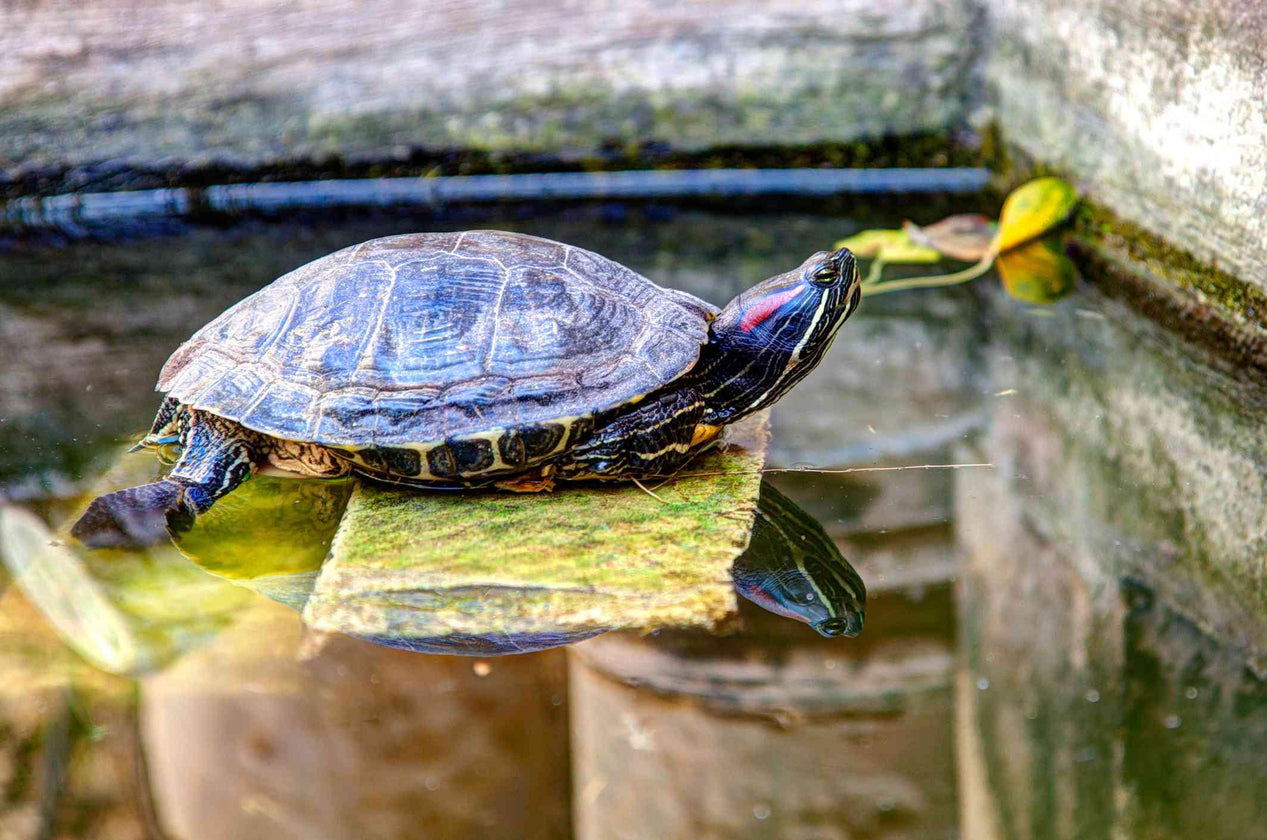Turtle Ownership: Breed Information, Care Items, and Facts

For most turtle owners, there are no words to describe the awesomeness of having a pet turtle. They are generally not picky eaters. They love light and are easy to maintain. They also make fun, stable family members. These incredible animals make life-long friends. Our bare-it-all guide will provide relevant information about pet turtles, their eating habits, behavioral traits, and how to care for them.
Fun Facts About Turtles

- They have been around for quite some time: By studying turtle fossils uncovered by archaeologists, scientists estimate that turtles have been around for over 200 million years, since the era of the dinosaurs. Modern-day sea turtles have been around for 120 million years.
- Turtles have gone to space: 1n 1968, the USSR’s Zond 5 was the first spacecraft to perform an orbit around the moon. Part of the crew that achieved this feat were two tortoises. The space probe returned safely, and the reptiles survived. Although they lost ten percent of their body mass, they did not display any drop in appetite and remained active showing.
- Turtles are endangered: The International Union for the Conservation of Nature (IUCN), opines that most turtles are endangered, vulnerable, threatened, or critically endangered. Analysts expect the radiated tortoise and ploughshare tortoise to be extinct within the next 45 years.
- All turtles lay eggs: Turtles simply lay their eggs and leave. No known species stick around to nurture their young. However, the mating age varies—some turtles must wait for 50 years to reach sexual maturity, others attain this stage in a few years.
- Turtles are not social butterflies: Although they do not fend off other turtles, turtles do not socialize or interact, preferring to spend their time foraging for food. Some turtles will, however, fight with other males for mating rights.
- Temperature determines a turtle’s sex: Turtle eggs produce an even number of male and female turtles when the temperature is moderate. However, rising temperatures have contributed to a spike in female births, endangering their existence.
- Turtles are nearly everywhere: Barring Antarctica, turtles can be found on every continent. However, the bulk of these incredibly adaptive species are in Southeast Asia and North America. There are a total of 350 turtle species in existence.
Breeding Guide: Deciding on a tortoise or turtle?

The first factor to consider is which types of pet turtles or tortoises to adopt. However, before we proceed it is important to note that although not all turtles are tortoises, all tortoises are turtles. A clear distinction between tortoises and other turtles is that they are they live almost exclusively on land.
As such, tortoises have hindlegs – to enable them to walk on land – while turtles have webbing. Their habitat also affects their diet. Turtles are majorly omnivores, while tortoises are mostly herbivores. Tortoises live longer than turtles, require a minimum of one hour of daily exercise, and are friendly with other pets. Turtles, on the other hand, can generally bigger than tortoises, are tougher to train than tortoises, and are not friendly with other pets.
Therefore, deciding on your choice of turtle is dependent on factors. These include whether you are willing to commit to exercising your pet, own other pets, and have the required habitat for each turtle type.
That said, the best pet turtles for beginners are the rear-eared sliders and the box turtle. These species are the easiest to own and care for. As such, our guide will focus on how to provide for these two turtle species.
How to Care for A Turtle

Many beginner turtle owners often ignore that caring for a turtle is not as easy as it seems. The owner must clean them frequently. They do not hesitate to bite and dislike being handled. Generally, these pets do not play well with kids.
Prepare their Habitat
The ideal indoor habitat for a turtle should measure 40 gallons. This will ensure that the turtle is able to grow to an adult size there without having to make changes. The home should allow for a dry area (land) and a wet area for swimming. It is important to read up about the turtle you wish to buy to set up the right living environment.
Set Up Temperature control
The ideal temperature for these cold-blooded critters ranges from 60oF to 90oF. Avoid temperature drops below 50oF as it may trigger hibernation or sickness. Aquatic turtles enjoy heated water and basking light to warm the tank’s air.
Find out your turtle’s hibernation times
Research on your turtle’s hibernation times and length to discover what works for your species. It is important that they are in the best possible environment to be inactive. For some turtle owners, this means burying them in their yards or allowing them to hibernate in a refrigerator.
Food
Feed turtles food that gives them the right nutrients to thrive. So live bugs, flked food, worms, lettuce, and fish veggies are great turtle foods.
Clean the tank and frequently change the water
Fresh food and water are a daily prerequisite for every non-hibernating turtle. Always clean the turtle’s habitat. Filtration in a turtle’s water aquarium is mandatory. A smelling tank is a signal to change water.
Avoid playing with your turtle often
Turtles stress easily if frequently handled. It is better to observe them than touch them. Regardless of their hard shells, they hurt easily. Therefore, you should never throw or drop a turtle.
Wash your hands after touching your turtle
After touching your turtle or anything in its cage, ensure you watch your hands. Failure to do so puts you at risk of getting salmonella.
Frequently Asked Questions
Do turtles recognize their owners?
Yes, turtles know their owners, recognizing their sight and sound. Some even swim right up to the water surface to greet their owners.
Do turtles get attached to their owners?
Turtles can become fond of their owners. They exhibit this trait by becoming playful when around their owners or handlers.
Do turtles have periods?
Only mammals have periods. As reptiles, turtles lay eggs. Therefore, turtles do not have periods.
Do turtles live on land or water?
Turtles can live on land and in water. However, the species will determine the preferred habitat. Tortoises live on land.
What do turtles eat?
The food eaten depends on the breed. Turtles are omnivores, carnivores, and herbivores depending on species. The common turtle food list comprises protein and vitamin A sources, fruits and vegetables, and turtle food bites. The best ingredients for your turtle should mimic ingredients found in its natural habitat.
Are turtles good pets?Turtles are easy to care for and do not demand too much physical contact. This makes them great pets. An added advantage is that the average lifespan of a turtle is 25 years. Therefore, these pets make long-term friends. However, you must be willing to commit time and resources to care for your turtle.
Best Sellers

WATERCOLOUR

THE YOUNG QUEEN

MINIMALIST DESIGN

MINIMALIST PET PORTRAIT

THE GENERAL

THE ICE QUEEN

THE ROYAL COUPLE

THE CONVICT

THE PRESIDENT

THE BOURGEOIS COUPLE

WATERCOLOUR SIBLING



